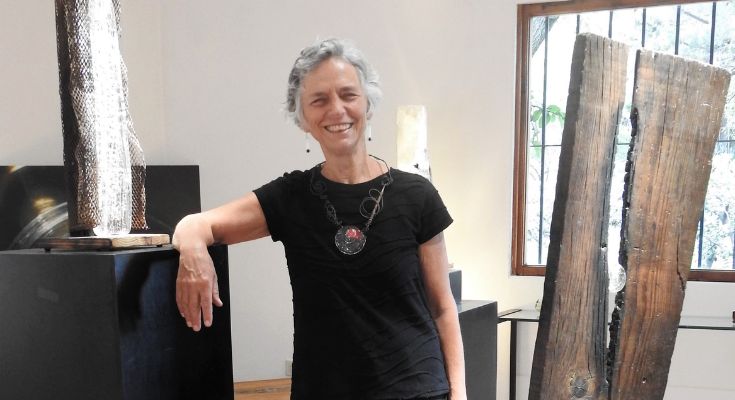By Natalie Taylor
Ana Thiel was born in Mexico City and from the time she was a little girl, she remembers using her hands to make things. She credits her mother for awakening that interest, because she would give cardboard to Ana and her brothers, and challenge them to create objects.
Ana studied Industrial Design in Mexico City, but during her studies at the university, someone gave a workshop on glass. She was instantly smitten. The strangeness of glass—its realm between solid and liquid, between hot and cold, between pliable and resistant, between dangerous and harmless—was mesmerizing, and she knew this was her medium. She applied and was accepted at Pilchuck Glass Center in Washington State, a place renowned the world over.
Following her time there, she returned to Mexico City. During a conference about the Pilchuck Center, two men approached her with a proposal for work. They had a perfume business, and wanted someone to make perfume bottles. It was a good business, and a means to make a living, but after five years Ana was ready for something new. She wanted to expand her artistic creations to much more than small bottles, and needed a different type of facility.
In 1986 she joined Panamericana de Vidrios, where she was given two kilns with varying degrees of heat. This allowed her to move far beyond bottles, to expand into more creative art objects. A few years later she was ready for a new beginning, and heard someone mention San Miguel de Allende. She came for a visit in 1992, and somehow, here, everything seemed to fall in place. She found her current house, which had just been vacated by another artist; a perfect place on Colegio Militar. The expansive grounds had a large shed which had once been a chicken coop, and this she eventually converted into her studio. It has windows all around, an important consideration when you are firing a kiln for 24 hours for several days, and need ventilation.
Ana has several kilns in her working studio, in an area called “the hot shop.” The firing kilns run to a temperature of 1200 degrees Centigrade (2192 Fahrenheit) and have to remain at that temperature for hours on end. Obviously, all the firing is done in the winter months, and even then, the open windows are indispensable. There is the “cooling oven” which runs at 500 C degrees (932 Fahrenheit) into which you place the molded glass when it comes out from firing. If you were to attempt cooling glass at room temperature immediately after firing, it would crack. Glass is temperamental and aggressive, Ana explained. It “eats the walls” of the oven, corroding them with the release of chemicals. The interior walls need to be resurfaced periodically.
The protection used during firings is substantial. Long gloves that reach over the elbow, apron, goggles, all made of fireproof material; and a protective scarf around the neck. Beyond the hot shop, there is a “cold shop,” a sandblaster, and finally the packing and assembling area. I wondered if Ana had ever burned herself during this process. She told me that yes, but many years ago when she was a novice. She said that these days she gets more burns baking in her kitchen oven!
Ana Thiel has done numerous exhibits around the world—America, Europe, Japan, and many other places. She has been invited as a resident artist and lecturer by institutions worldwide. In San Miguel, we have a public example of her work in Bellas Artes. It was meant to be a fountain, but currently stands as a solitary glass sculpture in the courtyard: a singular column composed of glass bricks. Ana takes her inspiration from nature—a drop of dew on a blade of grass, the blueness of a glacier, a puddle, the bark of a tree, a bird in flight. All these images, and others, are transformed into magical creations in glass. Her artwork is a reflection of the qualities of glass itself—both commanding and gentle, fluid and rigid; it is the soft lapping of sea water and the burst of magma from a volcano. Ocean and mountains, the verdant and the arid, earth and beyond, all captured in glass through her artistry and her imagination. Only a visit to her studio and her garden can make you appreciate the transformation of ordinary things into something singular and wondrous. You may contact Ana Thiel at: anamthiel@gmail.com
Natalie Taylor: BA in English Lit and Journalism, Loyola University, Chicago, 1995. MFA in Creative Writing, Vermont College, Montpelier, VT, 1999. Published writer, editor, journalist. Spanish teacher in the US, English teacher in Buenos Aires, Argentina. Translator. www.natalietaylor.org Contact: tangonata@gmail.com




